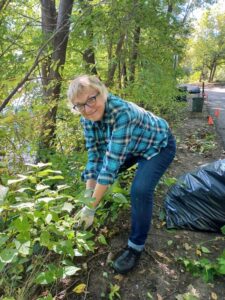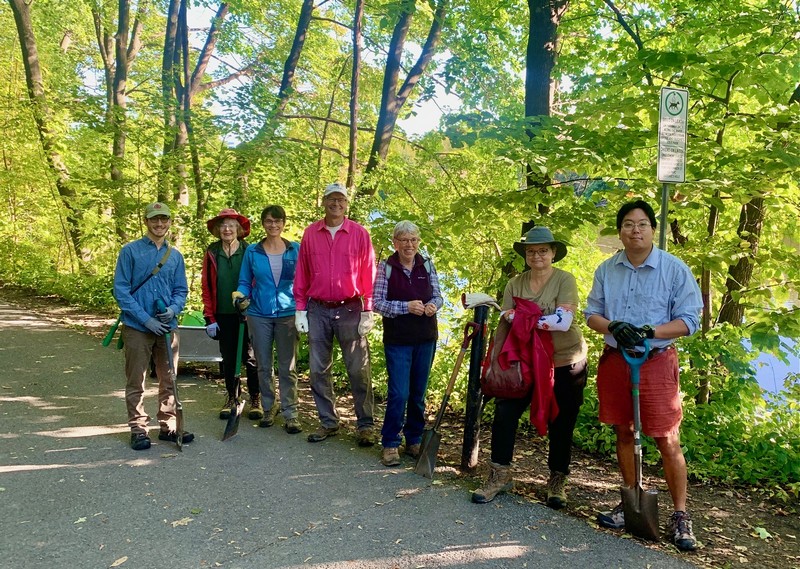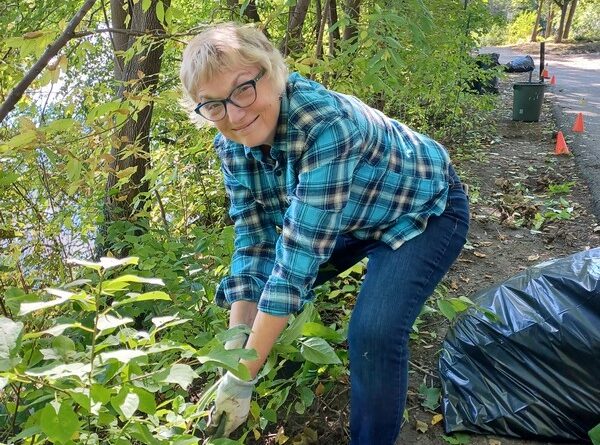Buckthorn volunteers get to the root of the problem
Bryan Dewalt
Neighbourhood volunteers this autumn chalked up a win for biodiversity in Sandy Hill, uprooting dozens of invasive Common Buckthorn bushes along the Rideau River, and planting more than one hundred native trees and shrubs in their place.

In all, 27 volunteers came out for Saturday morning work sessions through the month of October, putting in well over 200 hours of labour. The project was organized by the Environment Committee of Action Sandy Hill (ASH) with volunteer support from the Sandy Hill Green Team (a group of neighbours who like to get their hands dirty doing practical work like planting and weeding). A grant from the Invasive Species Action Fund, a provincial program administered by the Canadian Invasive Species Centre, provided money for the purchase of trees and shrubs.
Common Buckthorn is a small tree introduced from Europe more than one hundred years ago. In its new home it quickly infested disturbed areas, like abandoned farms, overgrown yards, and city riverbanks. It produces huge crops of berries, it leafs out early and stays green well into November, and it degrades the soil for other plants. These traits enable Common Buckthorn to outcompete native vegetation and form dense thickets that support little other life. Like other invasive alien plants, the problem is that almost nothing locally has evolved to eat it. This blows a big hole in local food webs. Plant-eating native insects are deprived of food, and this impact cascades through populations of insect-eating native birds and other wildlife.
It is extremely difficult to eradicate invasive plants, once established over a wide area But as a community we can make an impact in our own yards and nearby public green spaces. The Ontario Invasive Plant Council offers resources on how to identify and control invasive plants, and even advises on what you can plant instead. ASH has targeted a stretch of the Rideau River south of Strathcona Park for a campaign to push back against invasive plants. Work to control Japanese Knotweed was carried out in 2021 and 2022, and now Common Buckthorn has been added to the list.
We are already seeing an increase in biodiversity in our project area, but ecological restoration projects like this need continuity. Volunteers must return every year to remove regrowth of invasive species, and care for new plantings. The City of Ottawa has been helpful in permitting volunteers to carry out work on the riverbank, which is public property. ASH currently has a one-year agreement with the City, but to ensure long-term follow-up and maintain a nucleus of committed volunteers, the City needs to move beyond ad hoc, short-term arrangements and embrace long-term stewardship. One model worth considering is the City of Toronto’s Nature Stewards program, which has 42 active, volunteer-led projects throughout that city.
Although field operations in Sandy Hill have now wound down for the season, please contact us if you are interested in volunteering with the Sandy Hill Green Team (formerly known as the Tree Group) by emailing sandyhilltreegroup@gmail.com, or with ASH’s Environment Committee at: sandyhillec@gmail.com

Photo: Andrew Johnson
